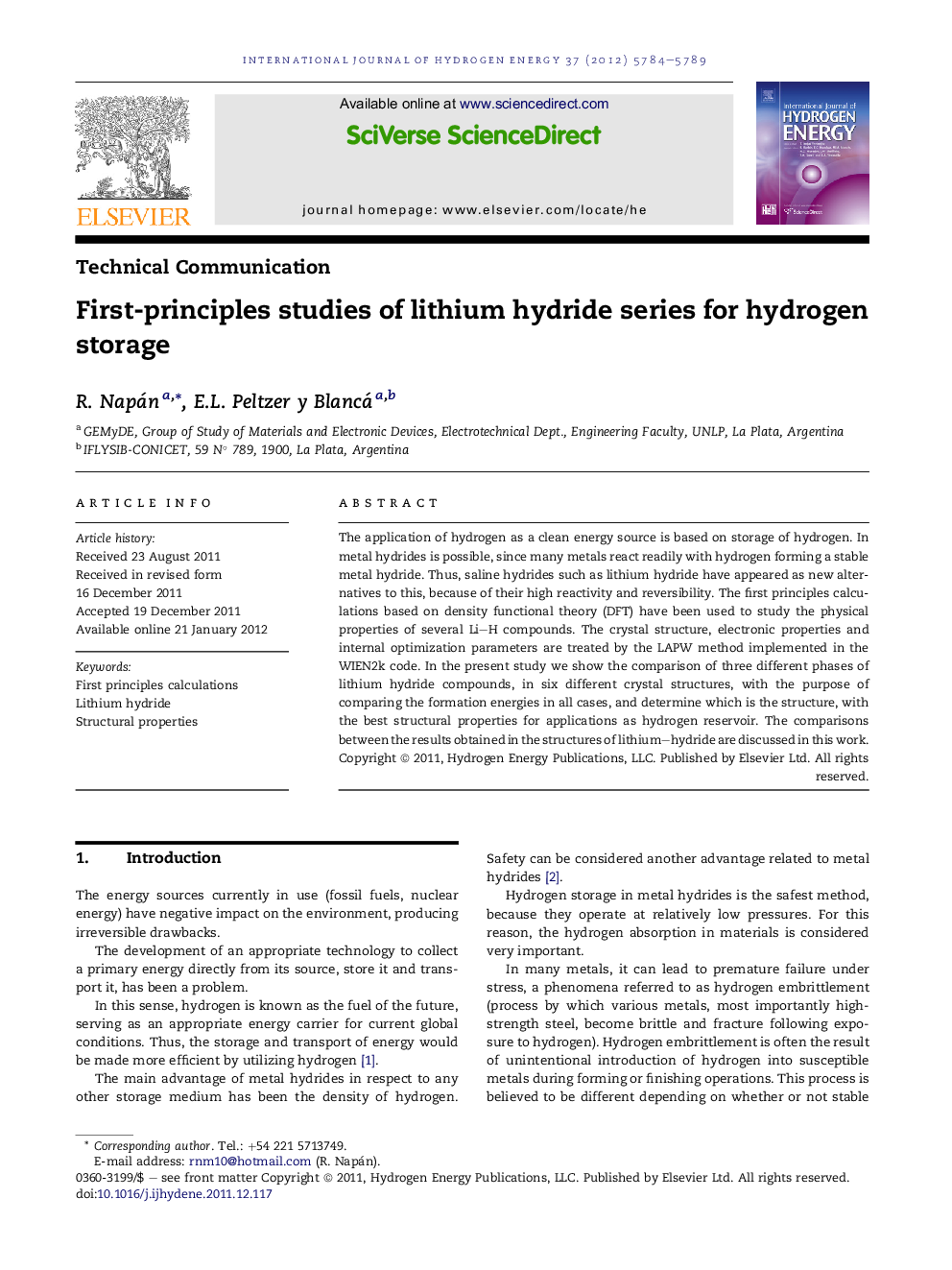| Article ID | Journal | Published Year | Pages | File Type |
|---|---|---|---|---|
| 1276869 | International Journal of Hydrogen Energy | 2012 | 6 Pages |
The application of hydrogen as a clean energy source is based on storage of hydrogen. In metal hydrides is possible, since many metals react readily with hydrogen forming a stable metal hydride. Thus, saline hydrides such as lithium hydride have appeared as new alternatives to this, because of their high reactivity and reversibility. The first principles calculations based on density functional theory (DFT) have been used to study the physical properties of several Li–H compounds. The crystal structure, electronic properties and internal optimization parameters are treated by the LAPW method implemented in the WIEN2k code. In the present study we show the comparison of three different phases of lithium hydride compounds, in six different crystal structures, with the purpose of comparing the formation energies in all cases, and determine which is the structure, with the best structural properties for applications as hydrogen reservoir. The comparisons between the results obtained in the structures of lithium–hydride are discussed in this work.
► Enthalpy is one of the most important quantities for hydrogen storage systems. ► We have performed six calculations, divided in two structures with different symmetry groups. ► We realized theoretical studies of metal hydrides to be utilized in applications for hydrogen storage.
